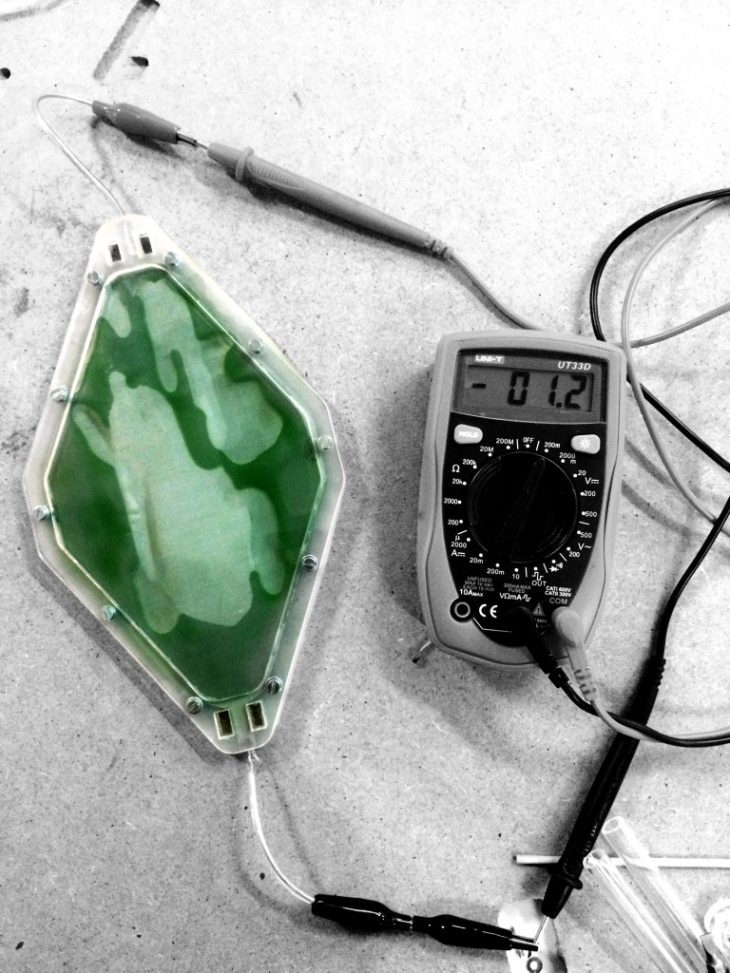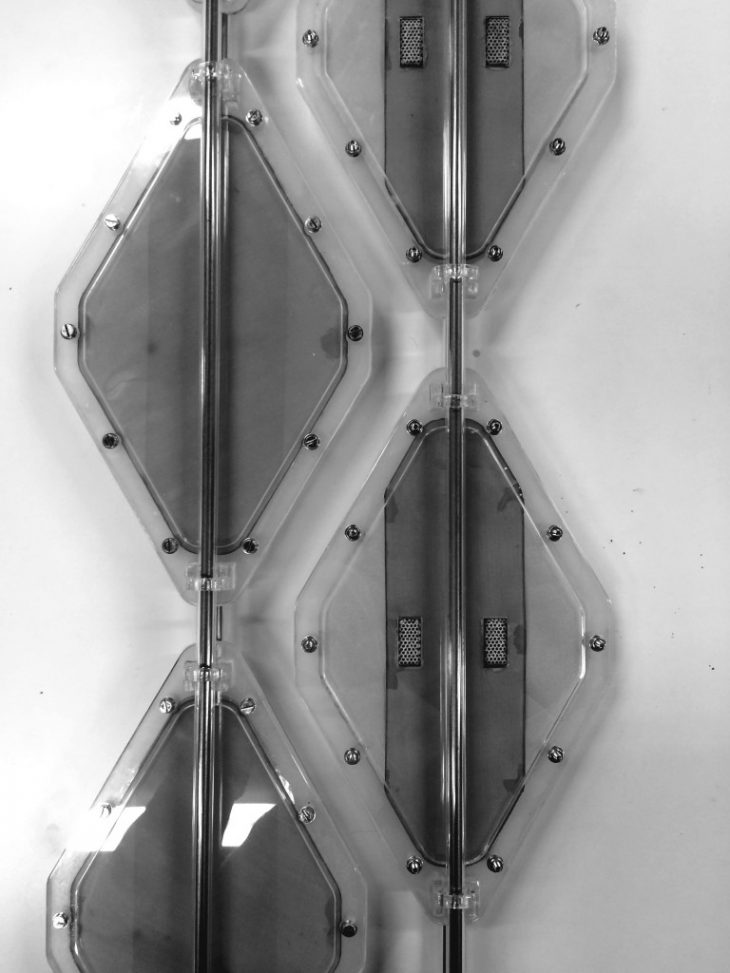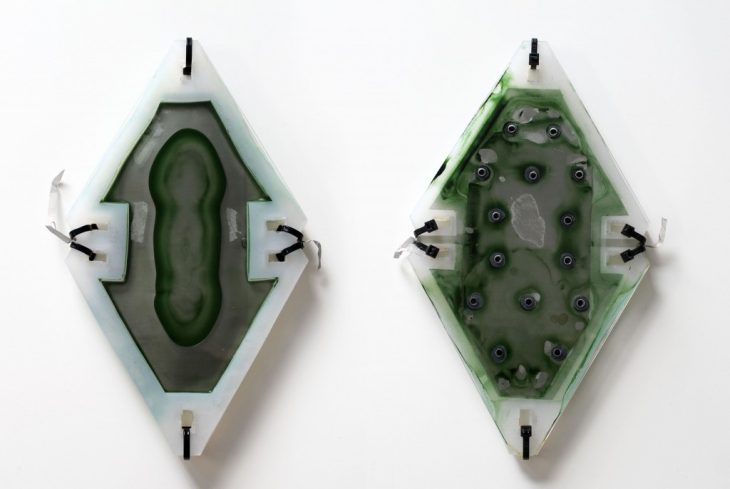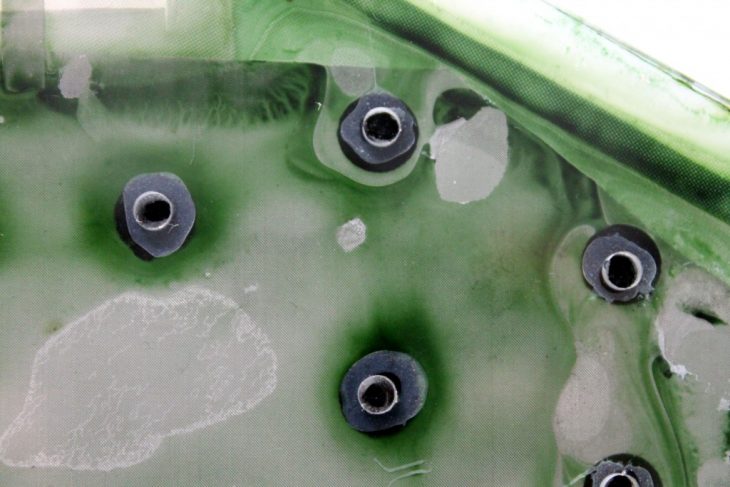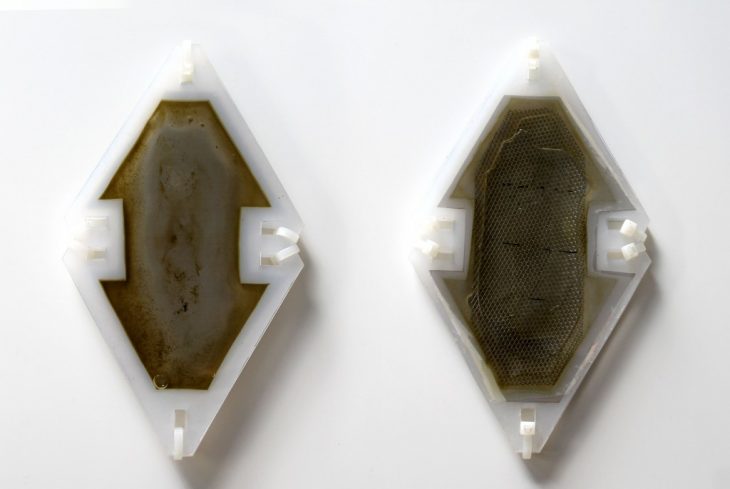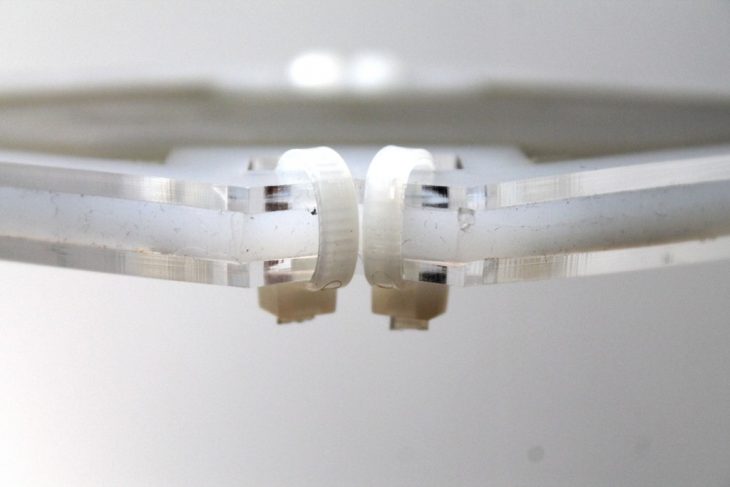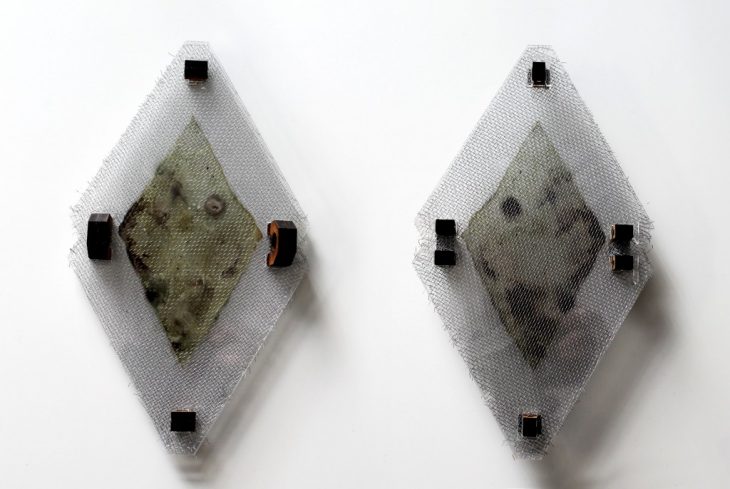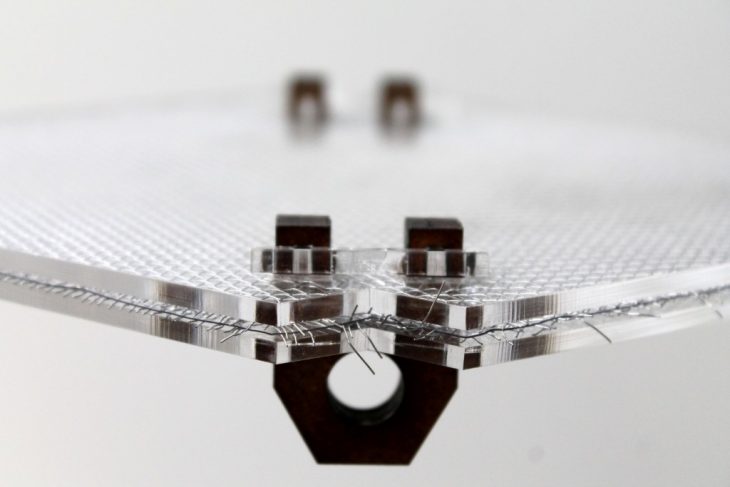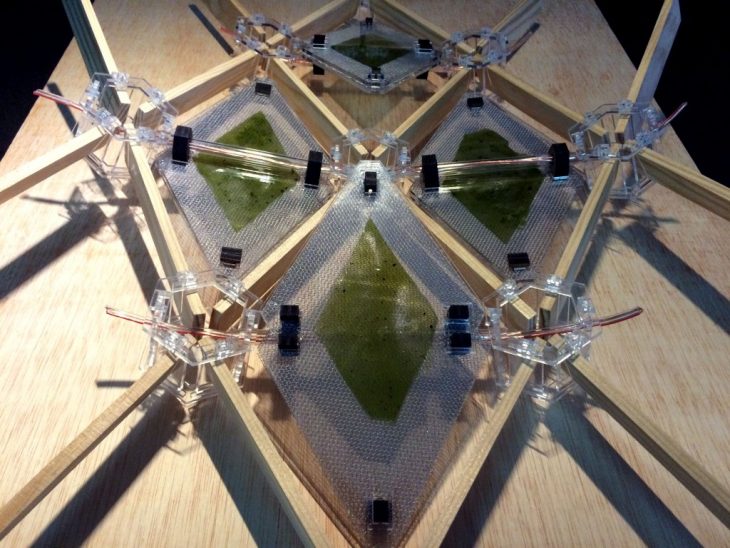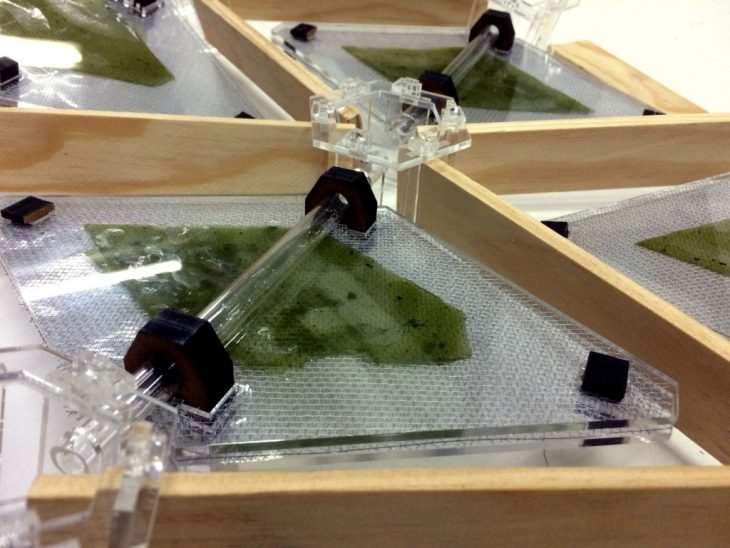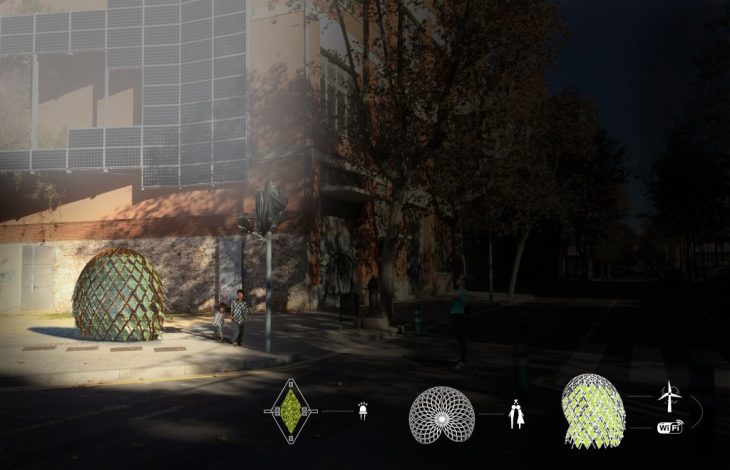PHOTOSYNTHETIC ALGAE CELL
Biophotovoltaic (BPV) system
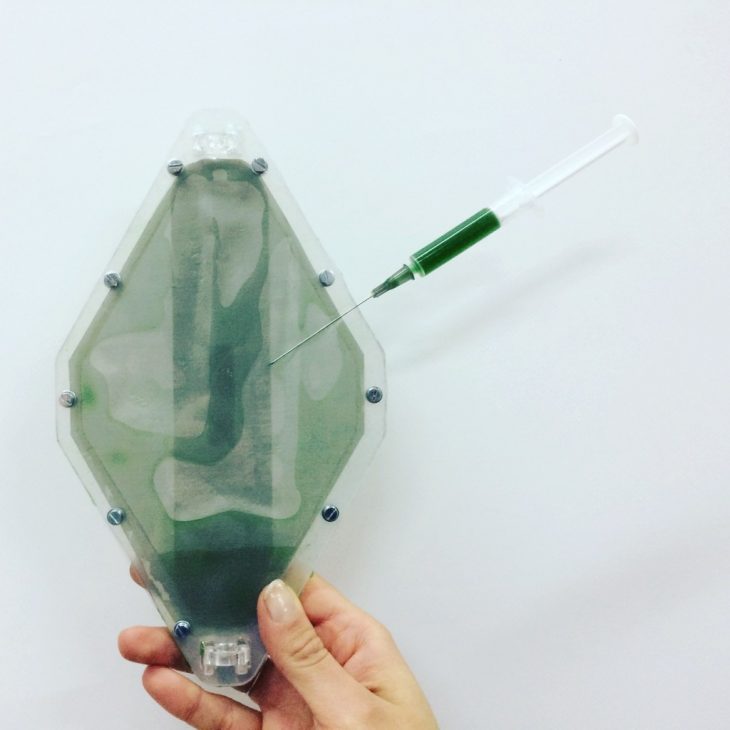
Nature has clearly demonstrated that it is possible to harness solar energy through the process of photosynthesis. When the energy of light is harvested by an oxygen-producing photosynthetic organism a series of photochemical and biochemical reactions takes place, leading to carbon dioxide and other inorganic materials such as water being transformed into organic products like carbohydrates, proteins and lipids, allowing the organism to grow.The same light energy can be used by photosynthetic organisms to generate electrical current by combining those organisms with electrodes to form biological solar cells. These apparatuses are generically called bioelectrochemical systems (BESs), or as we prefer biophotovoltaic (BPV) devices. The technology behind BPV system was developed by Paolo Bombelli and his team at the University of Cambridge.
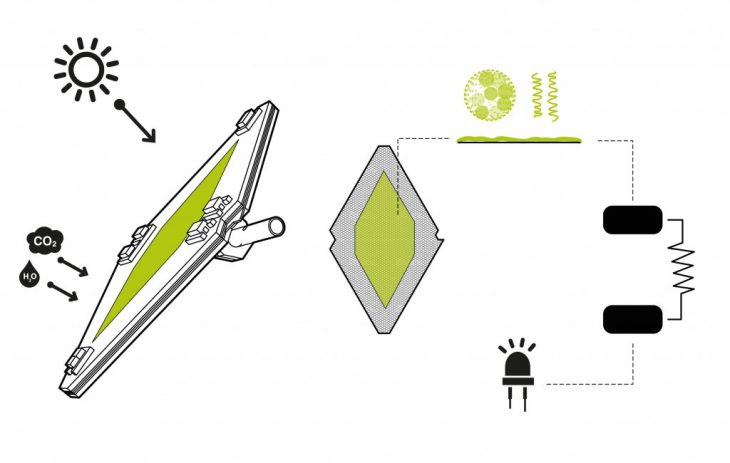
In collaboration with Paolo, this project focused on using and adapting the BPV biofilm system to create an adaptive energy producing algae cell. Demonstrating one of the many benefits this microorganism has in its ability to harvest solar energy and generate electricity from the photosynthesis process. The cell panel rotates to agitate the algae and generates electricity through a network of conductive anode and cathode meshes with a carbon catalysts to transfer electrons from the cell surface to the electrode that harvests them. Power outputs from this setup is still low but is able to generate 55 millivolts per panel.
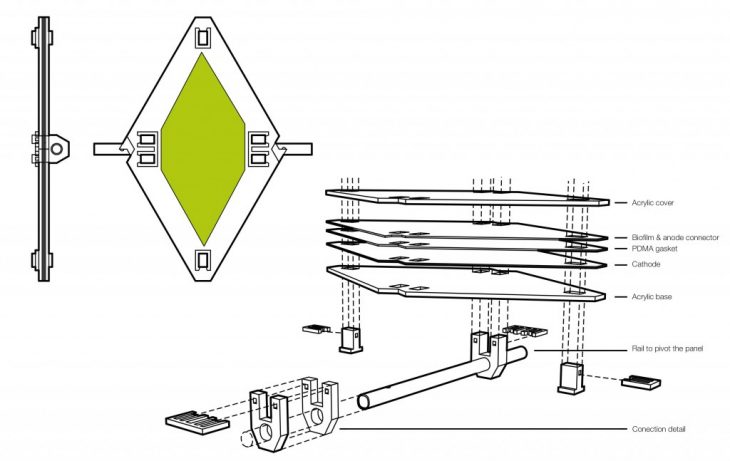
IAAC, Biophotovoltaic.
PHOTOSYNTHETIC ALGAE CELL is a project of IaaC, Institute for Advanced Architecture of Catalonia developed at Master in Advanced Architecture, MAA02 in 2016/17 by:
Students:
Thora H. Arnardottir (website)
Jessica Dias
Christopher Wong
Faculty:
Chiara Farinea, Carmelo Zappulla, Paolo Bombelli, Maria Kuptsova
Guest Advisor:
Claudia Pasquero
Claudia Pasquero
Biology Support:
Nuria Conde Pueyo
Nuria Conde Pueyo
